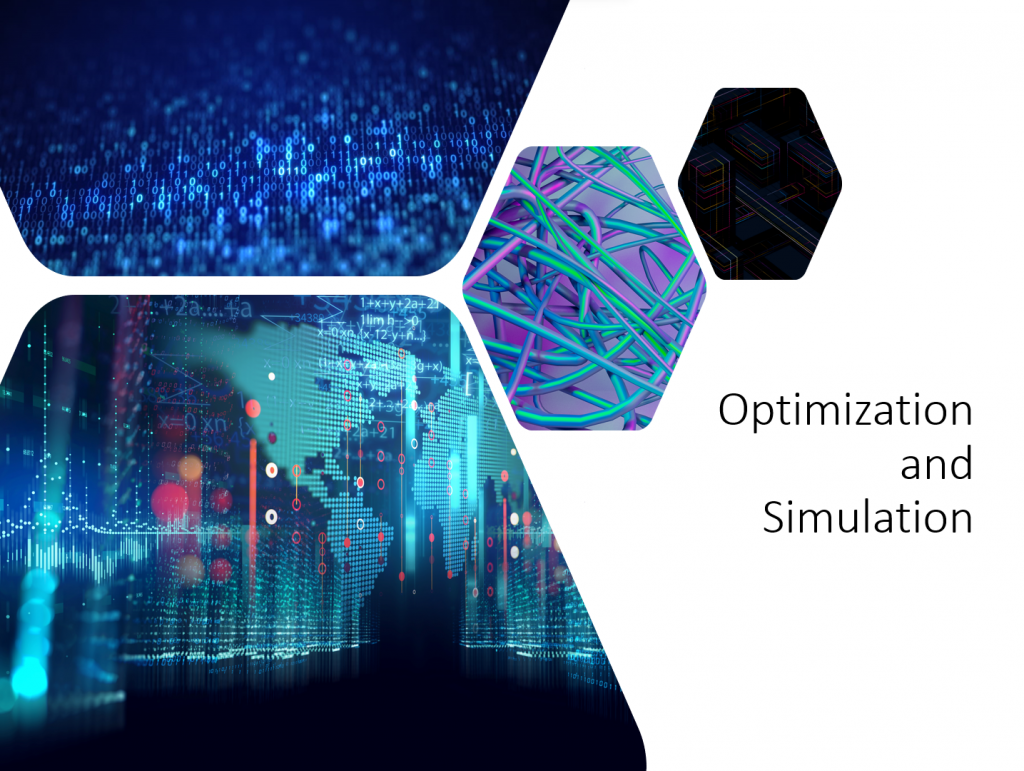“Simulation” and “Optimization” are terms employed by researchers and analysts who are attempting to learn something about natural or human systems by building and executing mathematical models of those systems. Mathematical models are typically systems of variables and equations which represent objects and behaviors found in the real-life systems which modelers are trying to understand and, thereby, predict. In the past few hundred years, scientists and engineers have gotten to be very good at building models of natural systems. Using these models, they have been able to increase their understanding of these systems and, as a result, are now able to predict what will happen when they utilize these systems in new ways. Hence, we now have computers and space travel as well as more mundane things like refrigerators and cars.
In the more recent past, economists and other social scientists began to use mathematical models to try to describe aspects of human systems involving trade and business. Mathematical equations were developed to try to show how individuals should behave under different economic systems and conditions (the so called, rational expectations model). Other equations were developed to describe how firms should behave under various conditions. A beautiful mathematical theory of a system of interacting firms and individuals was developed which described a theoretical “equilibrium” where both firms and individuals maximized “profits” and “utilities.” Most economists recognize that the idealized conditions necessary for this model are far from reality, but the models have proven to be valuable sources of insight into economics.
In the 1960’s researchers began employing principles from electrical engineering to human systems such as businesses, organizations, and economies. These principles included well-known and observable phenomena such as positive and negative feedback, response times (time lags), and coupled feedback loops (interacting subsystems). These phenomena could not be fit so easily into the kind of mathematical equations which could be “solved” for some kind of long-term final outcome (equilibrium). Rather they had to be studied by “simulating” the equations over time, i.e., seeing how they would unfold over time by computing the values of the variables using the equations defining them.
Advances in mathematical theory during the past several decades has enabled researchers to combine such models with real life data using “optimal filters,” mathematical devices aimed at extracting the maximum amount of information about a system given the data available. These advances were again developed for engineering but have found utility in modeling of such human systems as “business operations,” “organizational activities,” even “economies.”
Optimization techniques have been used by scientists for centuries and by social scientists in the field of Operations Research for the past fifty years. Originally designed for military logistics, these techniques have spread widely into other areas of business including project planning, materials sourcing, transportation planning, and financial analysis.
In the 1950’s researchers developed techniques for analysis and optimization of investment portfolios. These techniques attempt to answer the question of how to optimize a set of investments by achieving maximum return with minimum risk. Since these two goals are often contradictory, the approach employs procedures to establish what strategy an investor should follow in order to achieve the maximum return possible while keeping risk at or under a certain level.
Even more recently, new optimization techniques have been designed and employed which base their techniques on the basic strategies of living systems. Known generically as “genetic algorithms,” these methods use the basic notions of “reproduction,” “mating,” “mutation,” and “survival of the fit” to weed out unlikely strategies and to cross-fertilize good ones to try to find the best possible solution to the problem one is solving.
New insights can often be gained by combining different ideas or methods. This is a frequent source of innovation. By combining simulation methods which allow analysts to model a variety of scenarios, including both likely and unlikely events, with state-of-the-art optimization technology, we believe that they will be able to develop more robust strategies for investment in an uncertain world.
We are experts in the area of employing these kinds of simulation and optimization techniques for the purpose of developing high-value solutions and strategies to our clients. Our purpose is to provide these capabilities in easy-to-use software systems running on inexpensive computers, so that they can have the greatest possible positive impact for the organizations which request our help.
RBAC, Inc. has been the leading provider of market fundamental analysis tools used by the energy industry and related government agencies for the past two decades. The GPCM® Market Simulator for North American Gas and LNG™ is the most widely used natural gas market modeling system in North America. RBAC’s G2M2® Market Simulator for Global Gas and LNG™ has been instrumental in understanding evolving global gas and LNG dynamics and is vital in fully understanding the interrelationship between the North American and global gas markets.



